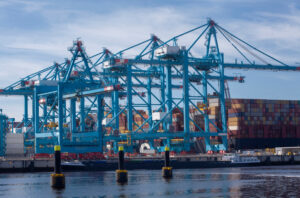Navis has introduced a new MACS3 loading computer module that automates stability calculations in compliance with the International Maritime Organization’s (IMO) International Code for Ships Operating in Polar Waters (Polar Code).
When navigating through polar waters, additional hazards such as ice accumulation and low temperatures that can affect a ship’s stability.
The new MACS3 PolarCodeBasic module replaces manual calculations previously required for tasks such as topside icing by automatically inputting stability calculations.
The software takes the ship design, on deck equipment and cargo structure into consideration to calculate all vertical and horizontal areas in accordance with the IMO Polar Code.
In the past decade, ship operations in polar waters have increased significantly.
With the introduction of the Polar Code, the IMO took the hazardous conditions associated with polar waters into consideration and set new standards to make ocean transport across those areas safer.
The regulation went into effect on January 1, 2017, and all new vessels built on or after that date are subject to the standards.
View Navis' technologies in PTI's Supplier Directory
As of January 1, 2018, it applies to all existing vessels navigating in polar waters as well. W
ith regard to stability, the IMO regulation requires that all ships have sufficient stability when ice accretion is likely to occur; therefore, the intact stability calculations must take into account an icing allowance.
MACS3 PolarCodeBasic module is available for all vessel types such as container vessels, bulk carriers, tanker vessels, multipurpose vessels, offshore vessels and roll-on roll-off vessels.
Established in 1984, the MACS3 loading computer includes a ship library of approximately 5,000 vessel profiles and holds a market share of approximately 65% for the container vessel segment.
Read a Port Technology technical paper by Dr. Oscar Pernia of Navis/XVELA on end-to-end planning processes
Following the integration of MACS3 with XVELA’s collaborative platform and StowMan, the vessel profiles are now also available to users of XVELA and StowMan software.
Due to MACS3’s connectivity to XVELA, customers profit from a faster check of stability and lashing calculations since the vessel planner of the terminals can see the same results as the vessel while creating their plan, resulting in a quicker start of loading and discharging operations at the terminal.
Furthermore, as an industry standard, MACS3 has been deployed for training of future nautical officers by maritime colleges and universities worldwide.
Guy Rey-Herme, the President of XVELA and the Head of Maritime Solution at Navis, said: “Reliable stability calculations are the key competence of the onboard loading computer MACS3.
“We are now happy to assist ship owners and managers in providing an effective way to optimize the protection of their crew, vessels and cargo operating in these harsh environments.”









